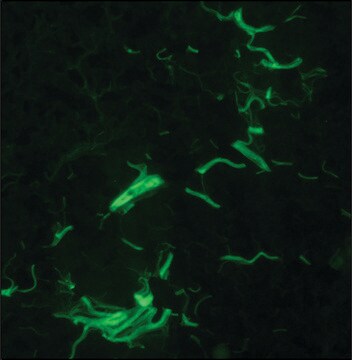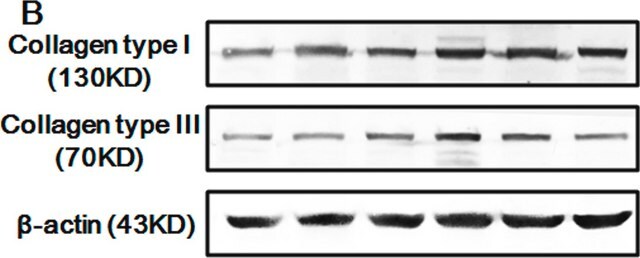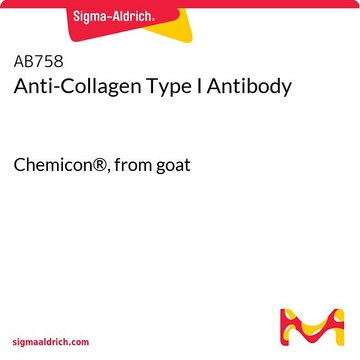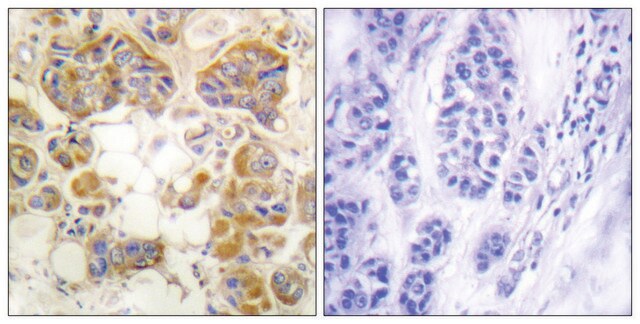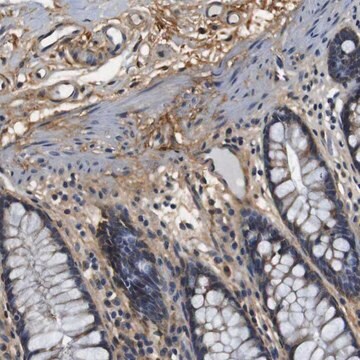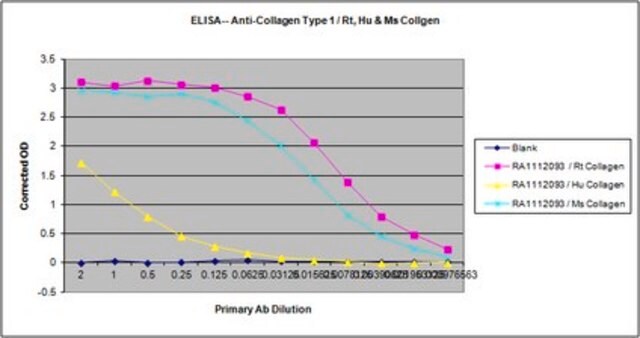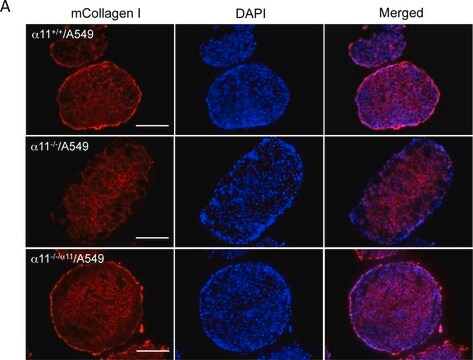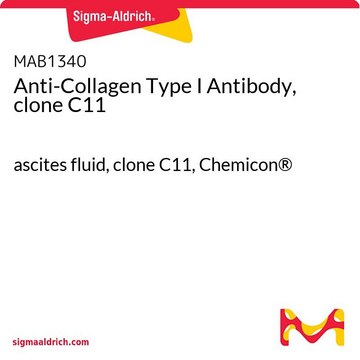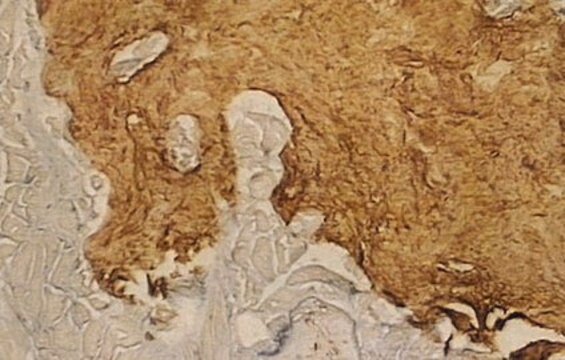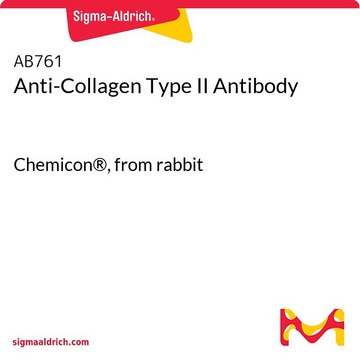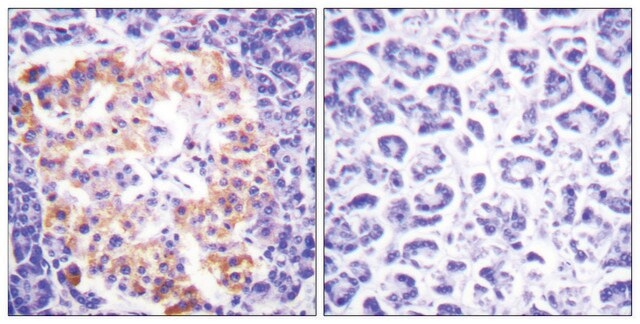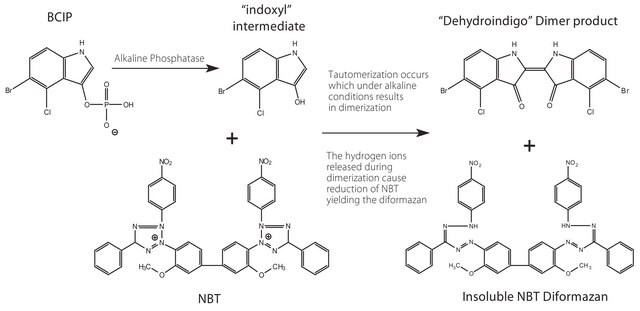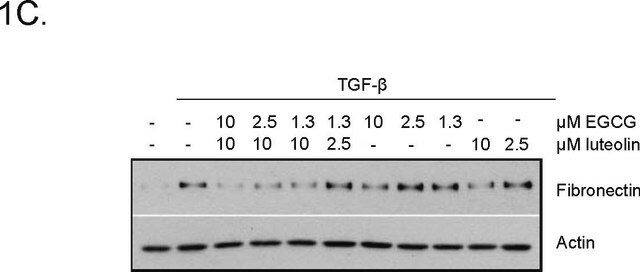AB745
Anti-Collagen Type I (COL1A1) Antibody
CHEMICON®, rabbit polyclonal
Synonim(y):
Anti-CAFYD, Anti-EDSC, Anty-EDSARTH1, Anty-OI1, Anty-OI2, Anty-OI3, Anty-OI4
About This Item
Polecane produkty
Nazwa produktu
Anti-Collagen Type I Antibody, Chemicon®, from rabbit
pochodzenie biologiczne
rabbit
Poziom jakości
forma przeciwciała
purified immunoglobulin (Semi-purified)
rodzaj przeciwciała
primary antibodies
klon
polyclonal
reaktywność gatunkowa
human
producent / nazwa handlowa
Chemicon®
metody
ELISA: suitable
immunohistochemistry: suitable
western blot: suitable
przydatność
not suitable for immunohistochemistry (Paraffin)
numer dostępu NCBI
numer dostępu UniProt
Warunki transportu
dry ice
docelowa modyfikacja potranslacyjna
unmodified
informacje o genach
human ... COL1A1(1277)
Specyficzność
Immunogen
Zastosowanie
Indirect microimmunofluorescent visualization of collagen type I on cryostat sections of human tissue or cultured cells: 1:10-1:40.
Western blot 1:200
Not recommended for use in paraffin treated tissues.
Optimal working dilutions must be determined by the end user.
Cell Structure
ECM Proteins
Postać fizyczna
Product is liquid in 0.15M Sodium Chloride, 10mM Sodium Phosphate pH 7.5 with 0.1% Mannitol and 0.1% Dextran as stabilizers. No preservative.
Przechowywanie i stabilność
Inne uwagi
Informacje prawne
Oświadczenie o zrzeczeniu się odpowiedzialności
Nie możesz znaleźć właściwego produktu?
Wypróbuj nasz Narzędzie selektora produktów.
Kod klasy składowania
12 - Non Combustible Liquids
Klasa zagrożenia wodnego (WGK)
WGK 2
Temperatura zapłonu (°F)
Not applicable
Temperatura zapłonu (°C)
Not applicable
Certyfikaty analizy (CoA)
Poszukaj Certyfikaty analizy (CoA), wpisując numer partii/serii produktów. Numery serii i partii można znaleźć na etykiecie produktu po słowach „seria” lub „partia”.
Masz już ten produkt?
Dokumenty związane z niedawno zakupionymi produktami zostały zamieszczone w Bibliotece dokumentów.
Klienci oglądali również te produkty
Nasz zespół naukowców ma doświadczenie we wszystkich obszarach badań, w tym w naukach przyrodniczych, materiałoznawstwie, syntezie chemicznej, chromatografii, analityce i wielu innych dziedzinach.
Skontaktuj się z zespołem ds. pomocy technicznej